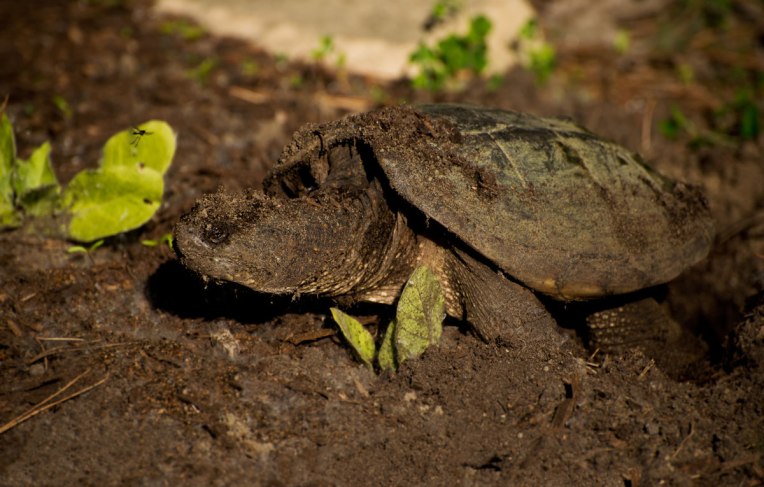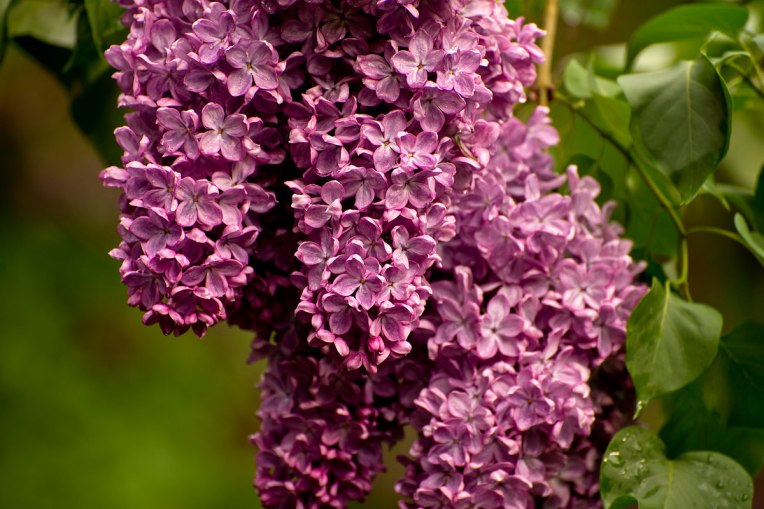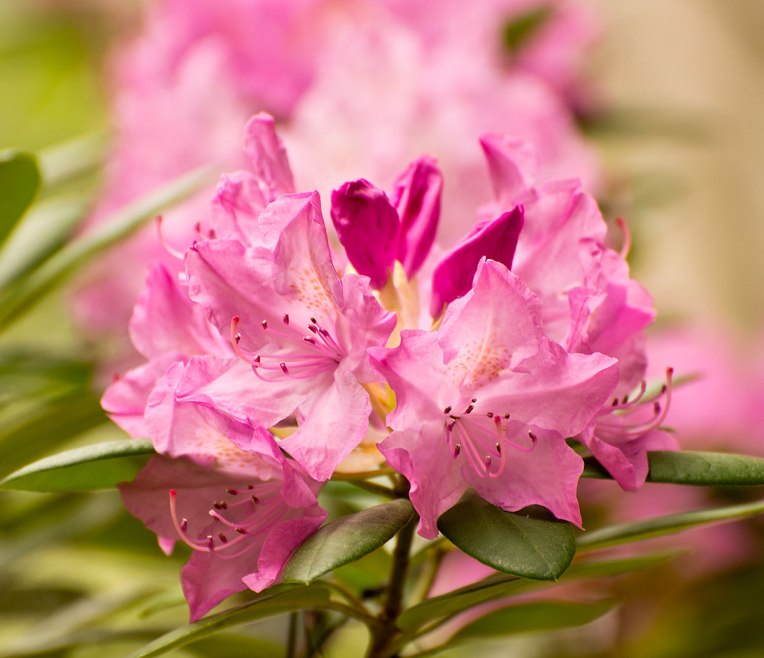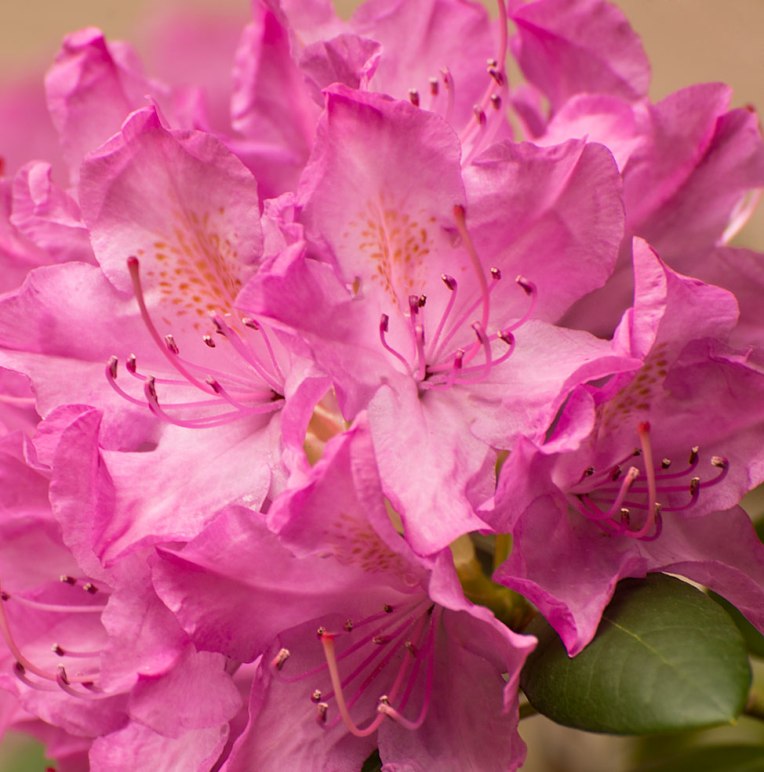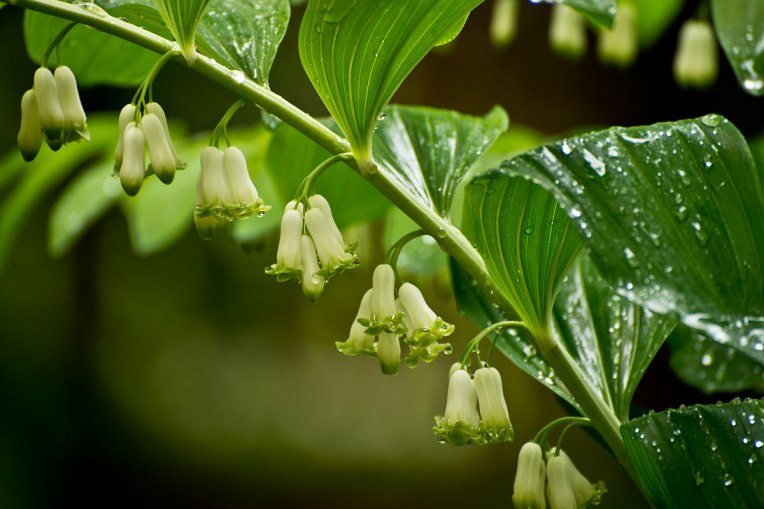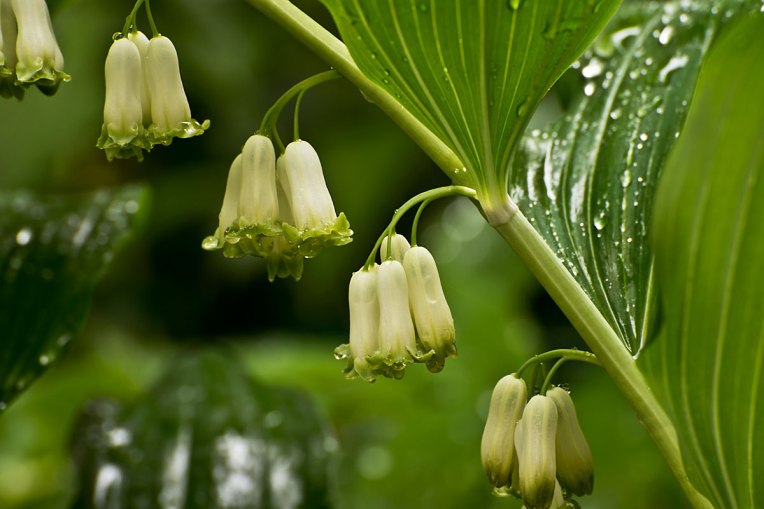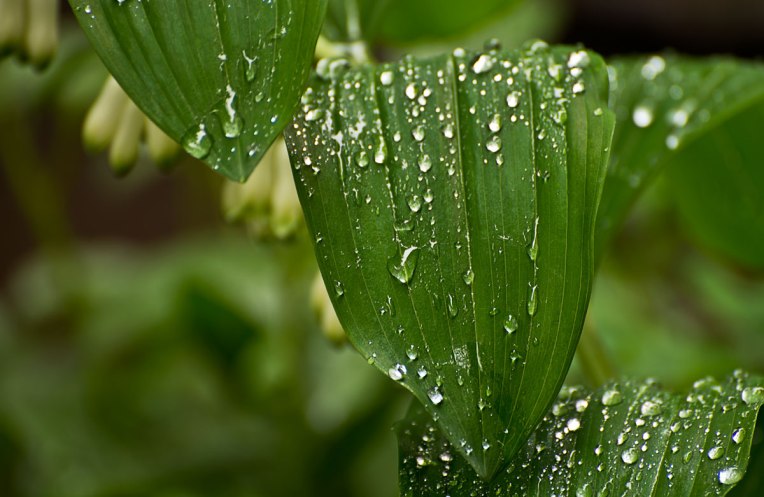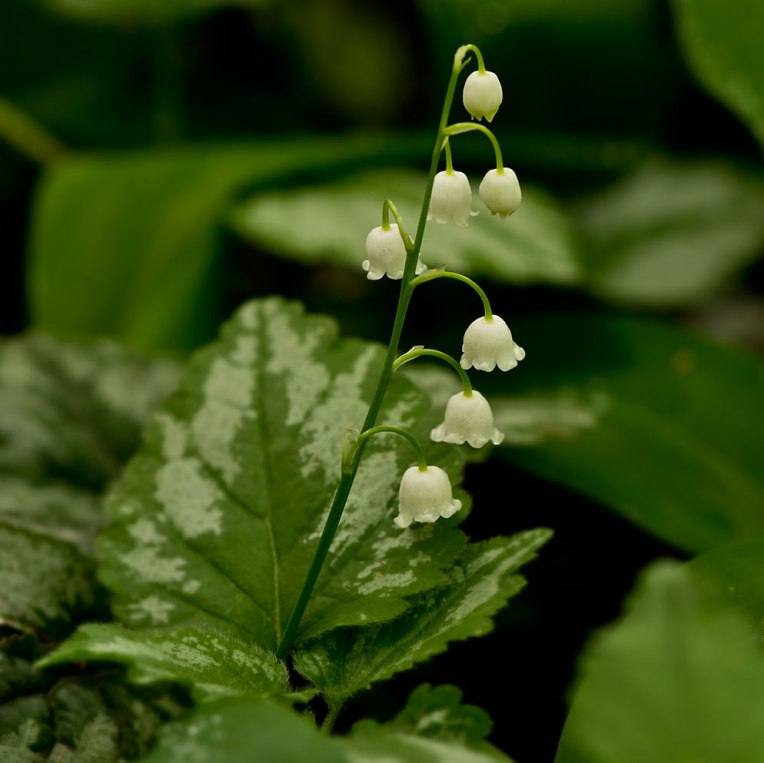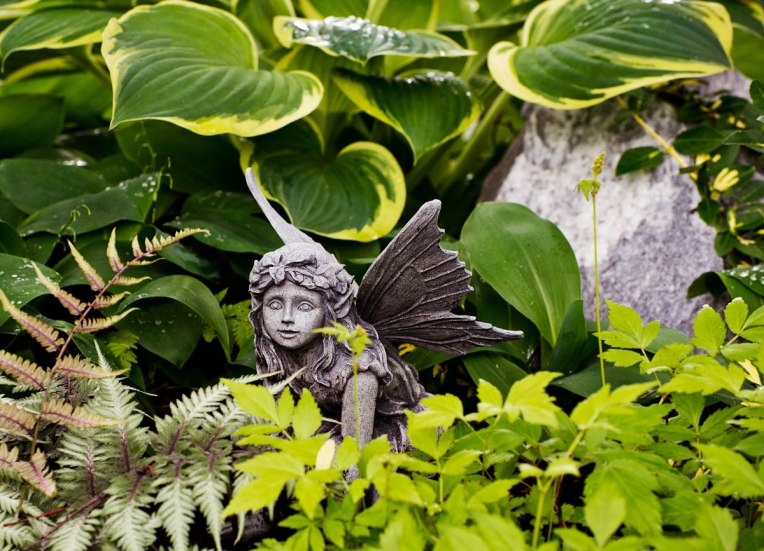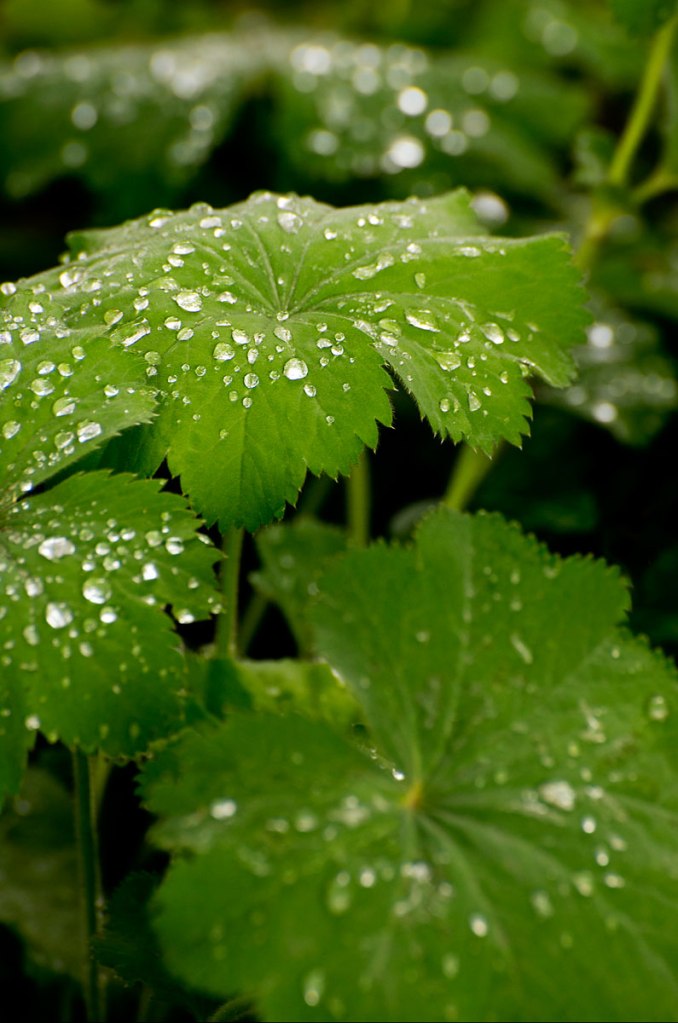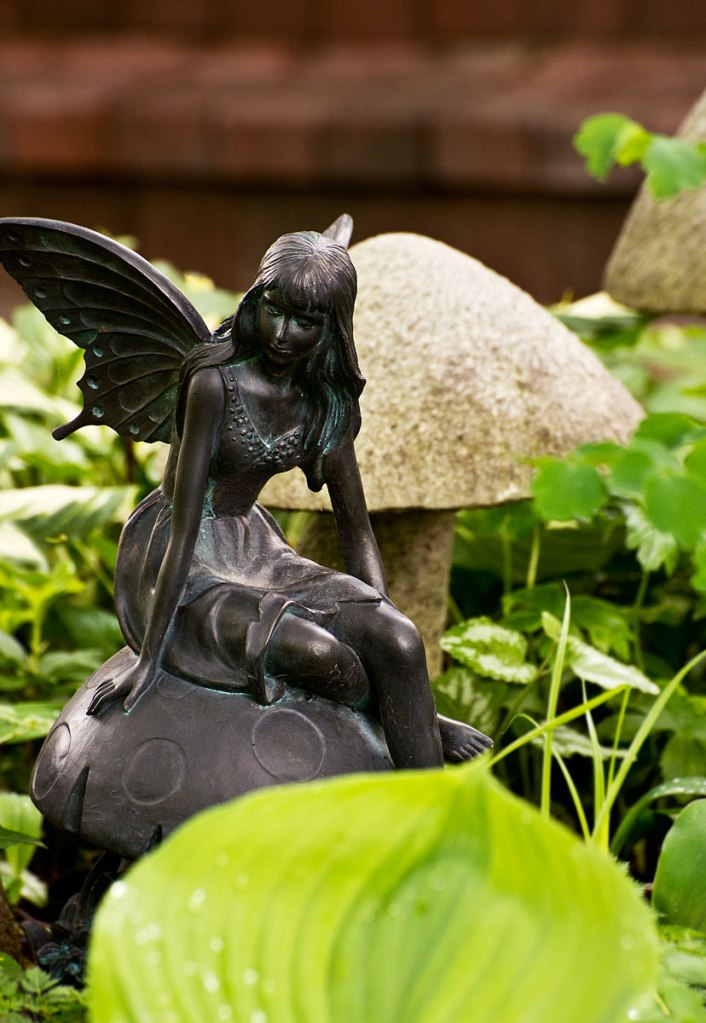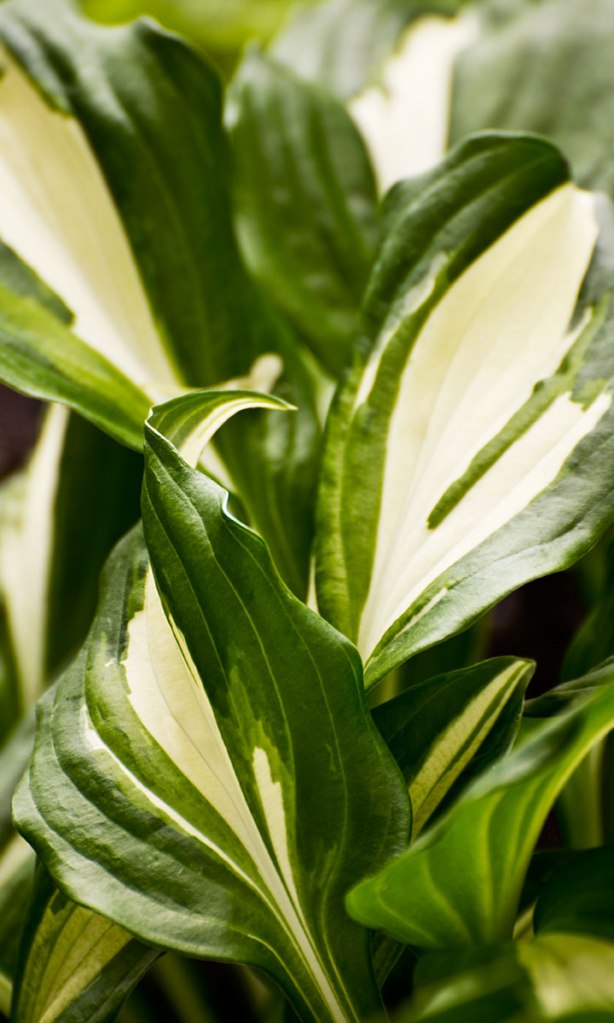It was a beautiful sunny morning and I was out photographing flowers. I was walking back home when my neighbour called out to me. I thought that he was pretty excited over me photographing a flower in his garden. But I hurried after him anyways and to my surprise a Snapping Turtle was laying eggs in his garden. My neighbour had noticed that something was digging a very large hole at the edge of his garden. His house is an end lot with a creek and the woods on one side of his garden. So from time to time wildlife munch in his garden and my neighbours are learning through trial and error what they do and don’t like to eat. He thought a ground hog or raccoon or something rodent like was digging up his garden and he wasn’t pleased. So he started watching for the culprit. He couldn’t believe his eyes when he saw her. Who knew there were snapping turtles in the creek.
The Snapping Turtle is Canada’s largest freshwater turtle. They have large shells typically covered in algae. With ours it was hard to tell because she was covered from head to toe in dirt. Their tails have “dinosaur-like” triangular crests along their length. Snapping Turtles spend most of their lives in water. They prefer shallow waters so they can hide under the soft mud and leaf litter, with only their noses exposed to the surface to breathe.
During the nesting season, from early to mid summer, females travel overland in search of a suitable nesting site, usually gravelly or sandy areas along streams. Our neighbourhood is built on packed sand. The area where she was digging is well hidden with easy access to the creek. She gave me plenty of time to photography her. When I arrived she had dug her hole and was laying her eggs. She then stood up and used her back legs to cover them. She climbed out of the hole, walked forward and turned like a truck carrying a wide load. She labourously turned herself around at an incredibly slow pace and made her way back in to the foliage and I assume down to the creek.
I wondered if she was bothered by us watching her, but she never pulled into her shell. I have since learned that Snapping Turtles have small lower shells, and cannot pull their head, tail and limbs into their shells for protection. This is why they may bite when threatened. However, Snapping Turtles rarely bite when in the water, and there is no risk to sharing lakes and rivers with them.
It takes 15 to 20 years for a Snapping Turtle to mature. As a result, adult mortality greatly affects the species’ survival. During the summer, many turtles cross roads in search of mates, food and nest sites. This is risky for turtles as they are to slow to get out of the way of moving vehicles. Eggs in nests around urban and agricultural areas are also subject to predators such as raccoons and striped skunks. So if the predators do not find these eggs we will have some hatchlings, which are about the size of a loonie, making their way to our creek. I hope they make it! Its wonderful to know we have such amazing wildlife at our doorstep and these guys will not make their homes in our attic which makes them very welcome neighbours.
© Copyright Beth Walsh Photography. All rights reserved.


